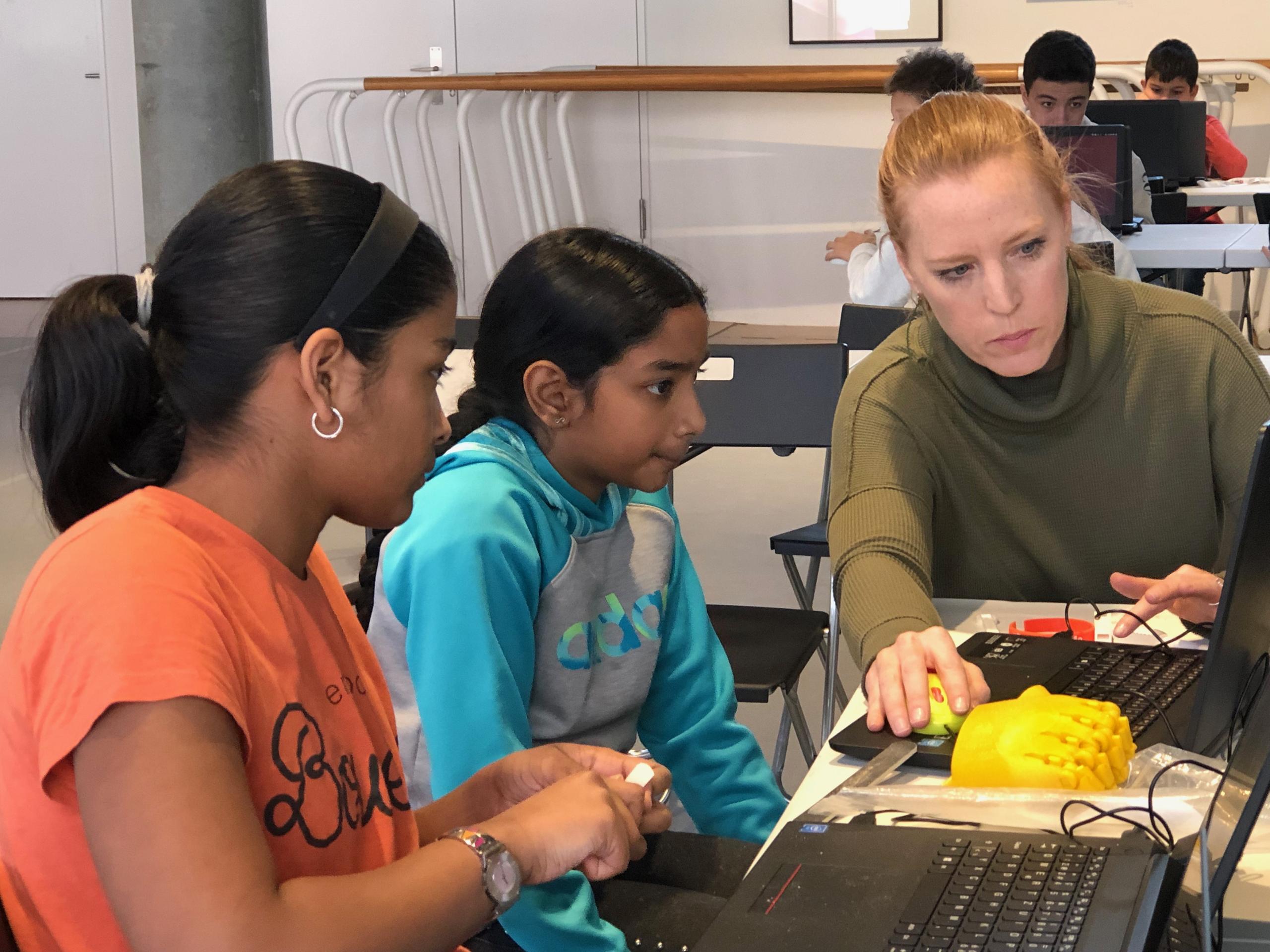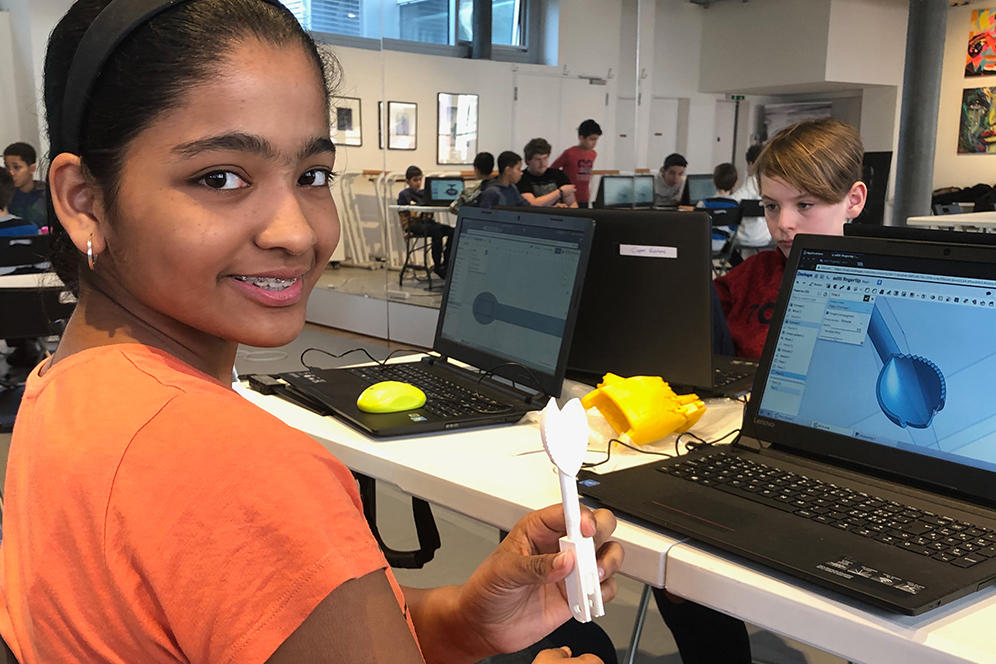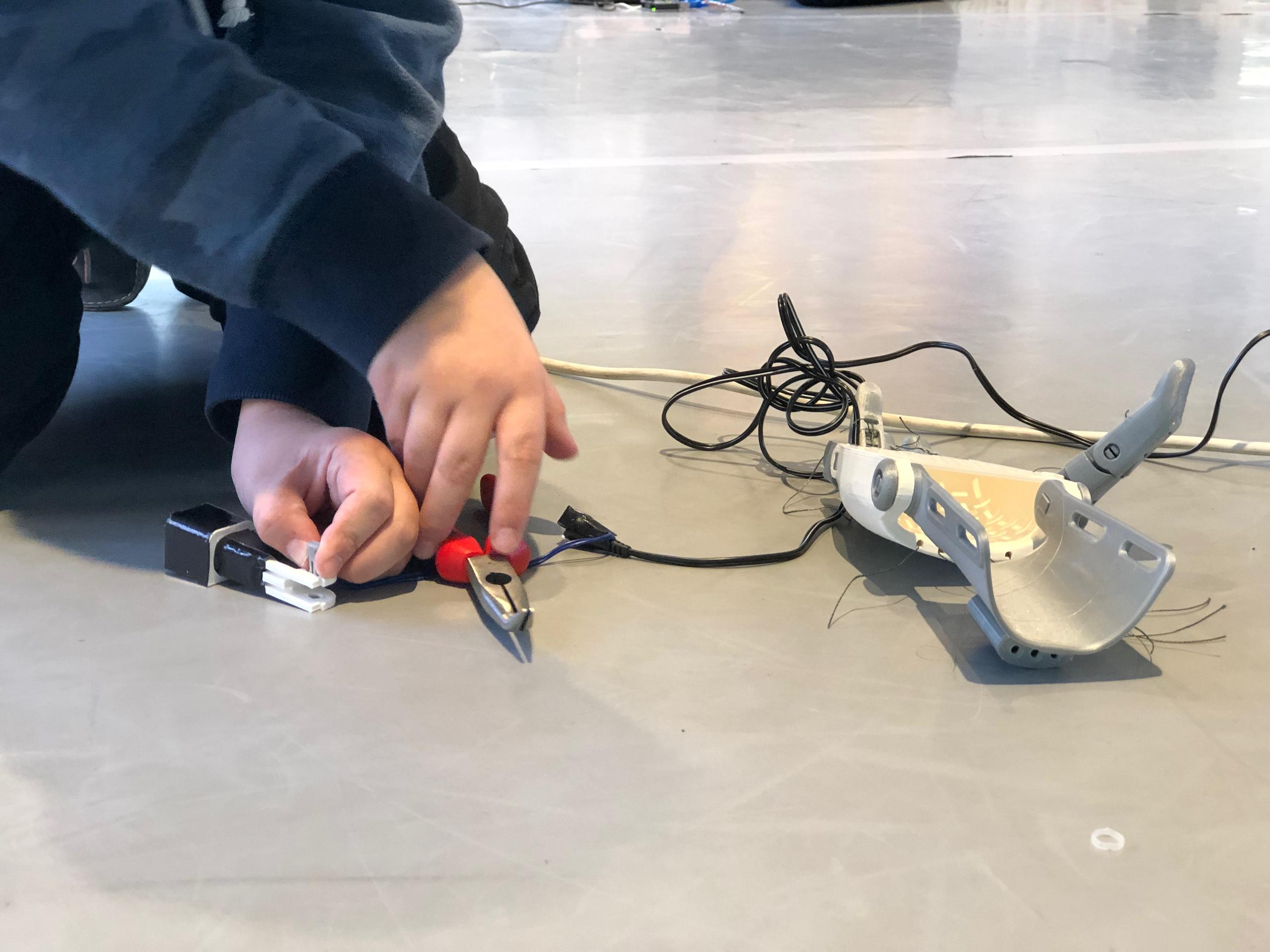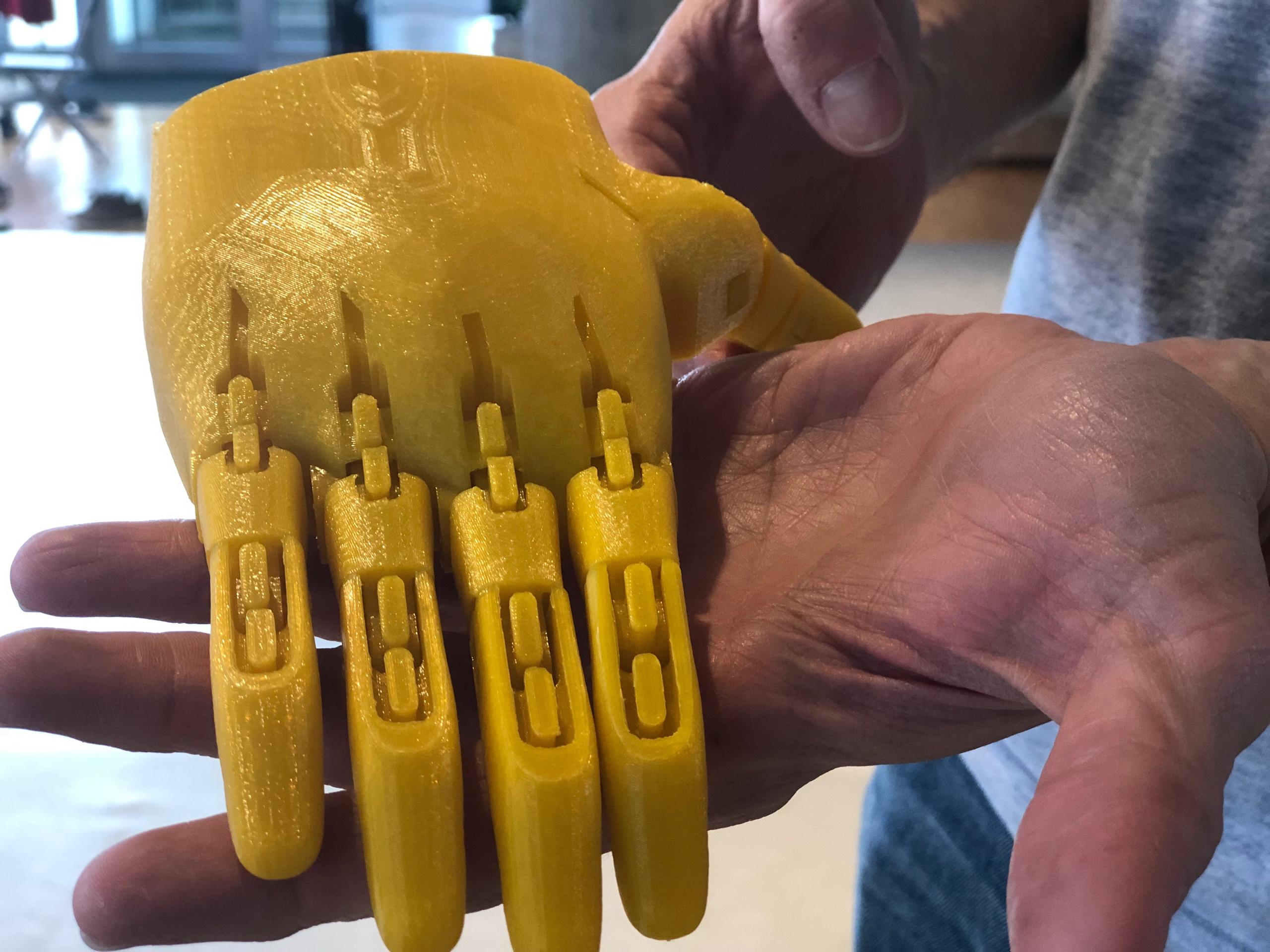Robotic hand teaches kids the power of tech and empathy

On Saturday mornings, a Basel arts centre becomes a playground for kids on a humanitarian mission. They're making 3D-printed hands for their peers in need, learning both technical skills and understanding for others.
They are focused on one part: a prosthetic finger that can be used for the performance of vital daily tasks or simply add an element of fun.
“Imagine you have no hand and you can’t eat or drink, you can’t enjoy food,” says Aditi who is working on what she calls a SPRIFE, an index finger replacement that combines the functionality of a fork, spoon and knife.
High-tech, low cost helping hand
The 13-year-old is taking part in a private class provided by TechLabs in SwitzerlandExternal link. The programme is certified by Enabling the Future,External link an international online community of 8,000 people which is using 3D printing technology to create printed hands and arms for those in need of such devices.

More
What is a Sprife?
One in 2,000 children born each day could benefit from such a device, according to the organisation. Between 170 to 200 devices would have to be built each day to keep up. The batch being made by children in Switzerland is a drop in the ocean compared to what’s needed.
They are not on par with a medical prosthetic in terms of quality, but the process itself offers a valuable lesson in empathy, says the programme founder.
“The power of this is that the tech is now accessible, and we can use it in a way that can impact other people’s lives,” says Joel Radvanyi, a former high frequency trader who founded TechLabs in January 2016. “This is a super low-cost solution that first and foremost gives you a way to overcome a lot of the emotional challenges of being different as a kid. They go from being shunned to being the robotics kid in the class.”
TechLabs offers after-school and weekend classes in the Swiss cities of Basel, Geneva, Zurich and Zug. The Robot Hand programme equips students between the ages of six and 10 with a complex toolkit covering 3D Design, 3D Printing, mechanical engineering, as well as circuits and sensors.

After a test phase spent fine-tuning the product with adults in neighbouring France, TechLabs plans to distribute such prosthetics to kids overseas who need them.
Tapping kids’ creativity
Such project-based learning draws on a child’s natural curiosity and creativity while passing on technical skills, say the instructors. The course is fee-based and has attracted an almost equal number of expat and local students. Corporate sponsorships allow for children of low-income families to participate.
“We teach kids agility with design and technology,” says Radvanyi. “We give them confidence with it.”
Kids taking part in the Robot Hand class craft all types of fingers – guitar picks, Lego bases, screwdrivers, smartphone styluses, and pens. Ten-year-old Prakriti is having fun making an eco-friendly toothbrush next to Aditi. “You just take off the bristles when they don’t work anymore,” she explains.
It doesn’t faze her to be one of two girls in a room of about 20 boys. “Girl power,” she says with a giant smile.
Instructors would like to see more girls taking part. While project-based learning is taking off as an education concept globally, cultural norms have been slower to change when it comes to STEM education for women and girls.
“We need more girls,” says engineer Deana Iobbi who hopes her presence in the classroom serves as a positive role model.
Getting girls into science, technology, engineering and maths (STEM)
The scarcity of girls and women studying and practicing science is a global issue. In Switzerland, in 2016, 2% of electricians, 9% of technicians and 11% of IT specialists and analysts were women, according to Digital Switzerland.External link Women account for 11% of all technical school-leaving qualifications. By comparison, 47% of doctors are women, nearly on par with men.
Digital Switzerland blames the lack of girls and women in STEM on conscious and subconscious stereotypes which start in the classroom. It notes that while Switzerland’s education plans integrate digitalisation, compulsory education is a cantonal responsibility, creating the potential for gaps in how ICT subjects are covered and challenges to incorporating gender approaches, so girls learn more than coding basics.
“We have to find what speaks to girls,” says Iobbi, “You think that engineering is very technical and clinical but really it is a ton of creativity: how should I shape this? How should it look? It took the evolution of my career to discover how creative it is, to find product design.”
Skills of the future
Picking up the SPRIFE index finger tool, she credits the thought Aditi put into its depth, allowing liquids to pool while keeping the piercing function of the fork higher up. The sharpness of the knife edge is just about right – strong enough to slice through food but not so sharp that it would hurt your mouth.
“An engineer,” she tells the class, “would prototype something like this. Then they would do user studies and improve the design based on user feedback. It is so cool that you are already doing things that I only learned in college.”
Sitting cross-legged on the floor, Tim prods and plies his creation into shape. “I want to help people who have no hands,” he says, deep in concentration.
Nearby, lying belly-down on the floor, Harald tinkers with the coding of his neopixel ring (a programmable ring of LEDs), borderline distraught over whether yellow, turquoise and then blue would yield a more visually gratifying outcome than yellow, turquoise, and red.
“I am changing the numbers here to change the numbers there,” he explains while also tweaking speed and brightness.
The instructors take pride in the curriculum’s hands-on element, bringing what the children imagine and create digitally into the real world. The distribution of the first batch of 3D plastic finger models was a joyful moment of collective victory capping several weeks of work by the students.
“Design, robotics, coding, they are going to be all over the map,” says Radvanyi, underscoring the importance of continuity in STEM education. “You wouldn’t send your kid for a week of violin class and expect them to be a violinist. It is the same with STEM. They have to commit and engage.”


In compliance with the JTI standards
More: SWI swissinfo.ch certified by the Journalism Trust Initiative

You can find an overview of ongoing debates with our journalists here. Please join us!
If you want to start a conversation about a topic raised in this article or want to report factual errors, email us at english@swissinfo.ch.